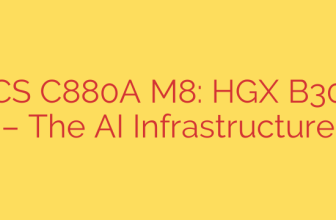
The Silent Threat: A Guide to Detecting and Preventing Lateral Movement
A cybersecurity breach rarely starts and ends at the same place. The initial point of entry—whether a phishing email, a vulnerable web server, or a compromised user account—is just the beginning. The real damage happens next, in a stealthy and methodical phase known as lateral movement. This is where an attacker, once inside your network, moves from system to system, seeking valuable assets and deeper control.
Understanding and defending against lateral movement is the difference between a contained security incident and a catastrophic, enterprise-wide compromise. It’s the critical battleground where cyber defense teams can turn the tables on an intruder.
What is Lateral Movement and Why is it So Dangerous?
Think of your network as a building. An attacker might get in through an unlocked window on the ground floor (initial access), but their goal is the secure vault in the basement (your critical data or domain controller). Lateral movement is the act of them creeping through hallways, picking locks on internal doors, and finding a path to that vault, all while trying to avoid security cameras and guards.
In technical terms, lateral movement refers to the set of techniques threat actors use to progressively move through a network after gaining initial access. Their primary objectives include:
- Reconnaissance: Mapping the internal network to identify high-value targets like file servers, databases, and domain controllers.
- Privilege Escalation: Gaining higher levels of access, often by compromising administrator accounts.
- Data Exfiltration: Locating and stealing sensitive information.
- Persistence: Establishing multiple footholds within the network to ensure they can regain access if one point is discovered and closed.
The true danger of lateral movement is that it often blends in with normal network traffic. Attackers intentionally use legitimate tools and credentials, making their activity incredibly difficult to distinguish from the everyday actions of employees and system administrators.
The Attacker’s Playbook: Common Lateral Movement Themes
While the specific tools may vary, attackers consistently rely on a few core themes to navigate a compromised network. By understanding these patterns, you can better focus your defensive efforts.
1. The Abuse of Legitimate Credentials
The most effective way for an attacker to move around a network is to look like a legitimate user. Stealing and reusing credentials is the cornerstone of modern lateral movement.
- Credential Dumping: Attackers use tools like Mimikatz to extract passwords and hashes directly from a computer’s memory (specifically, the LSASS process).
- Pass-the-Hash (PtH): In Windows environments, attackers can use a user’s password hash—instead of the plaintext password—to authenticate to other machines on the network.
- Pass-the-Ticket (PtT): This technique involves stealing Kerberos authentication tickets, which allows an attacker to impersonate a user and access resources without needing a password or hash.
The key takeaway is that once an attacker has valid credentials, their movement can appear as completely authorized activity. This bypasses many traditional security tools that are focused on external threats and malware signatures.
2. “Living Off the Land” with Native Tools
Why bring a conspicuous, custom-built hacking tool when you can use the powerful administrative tools already built into the operating system? This is the principle behind “living off the land,” where attackers use legitimate system utilities to achieve their goals.
Commonly abused tools include:
- Remote Desktop Protocol (RDP): A primary tool for legitimate remote administration, RDP is also a favorite for attackers to graphically control a compromised machine.
- Windows Management Instrumentation (WMI): A powerful interface for managing devices on a network, WMI can be used to execute commands, run scripts, and move files between systems remotely and discreetly.
- PowerShell: This advanced command-line shell is an administrator’s best friend and an attacker’s secret weapon. It allows for fileless attacks, remote command execution, and deep system manipulation.
- Server Message Block (SMB): A protocol used for file sharing, attackers can use it with stolen credentials to access file shares, stage tools, and exfiltrate data.
By using these native tools, attackers minimize their footprint on the endpoint, making detection by anti-virus and other signature-based tools much less likely.
3. Exploiting Internal Vulnerabilities and Misconfigurations
Not all vulnerabilities are on the network perimeter. Many organizations have unpatched systems, legacy applications, and weak configurations inside their network.
Once an attacker gains an initial foothold, they perform internal scans to find these weak points. A single unpatched server or a service running with default credentials can provide an easy pathway to a more critical part of the network. This is why consistent internal vulnerability management is just as important as securing your external-facing assets.
Actionable Steps to Strengthen Your Lateral Movement Defense
Defending against lateral movement requires a shift in mindset—from trying to build an impenetrable fortress to assuming a breach will happen and focusing on limiting an intruder’s mobility.
Implement the Principle of Least Privilege: Ensure that users and service accounts only have the absolute minimum permissions required to perform their roles. An attacker who compromises a standard user account should not be able to access administrative tools or sensitive servers.
Enforce Network Segmentation: Divide your network into smaller, isolated zones. Place critical assets like domain controllers and databases in a highly restricted segment. This creates internal checkpoints, making it much harder for an attacker to move freely from a low-security zone (like user workstations) to a high-security one.
Secure and Monitor Administrative Tools: Pay close attention to the tools attackers love to abuse. Enable robust logging for PowerShell, WMI, and RDP sessions. Use security analytics platforms to monitor for anomalous usage, such as an administrator logging into a workstation they’ve never accessed before or commands being executed at unusual hours.
Practice Good Credential Hygiene: Multi-factor authentication (MFA) is one of the single most effective controls against lateral movement. Enforce it wherever possible, especially for administrative accounts and remote access. Additionally, use strong, unique passwords for all accounts and secure privileged credentials with a Privileged Access Management (PAM) solution.
By understanding how attackers operate once inside your network, you can build a more resilient and proactive defense. The goal is to make movement so difficult, noisy, and slow that you can detect and evict the intruder before they ever reach their target.
Source: https://feedpress.me/link/23532/17186175/common-threat-themes-defending-against-lateral-movement








